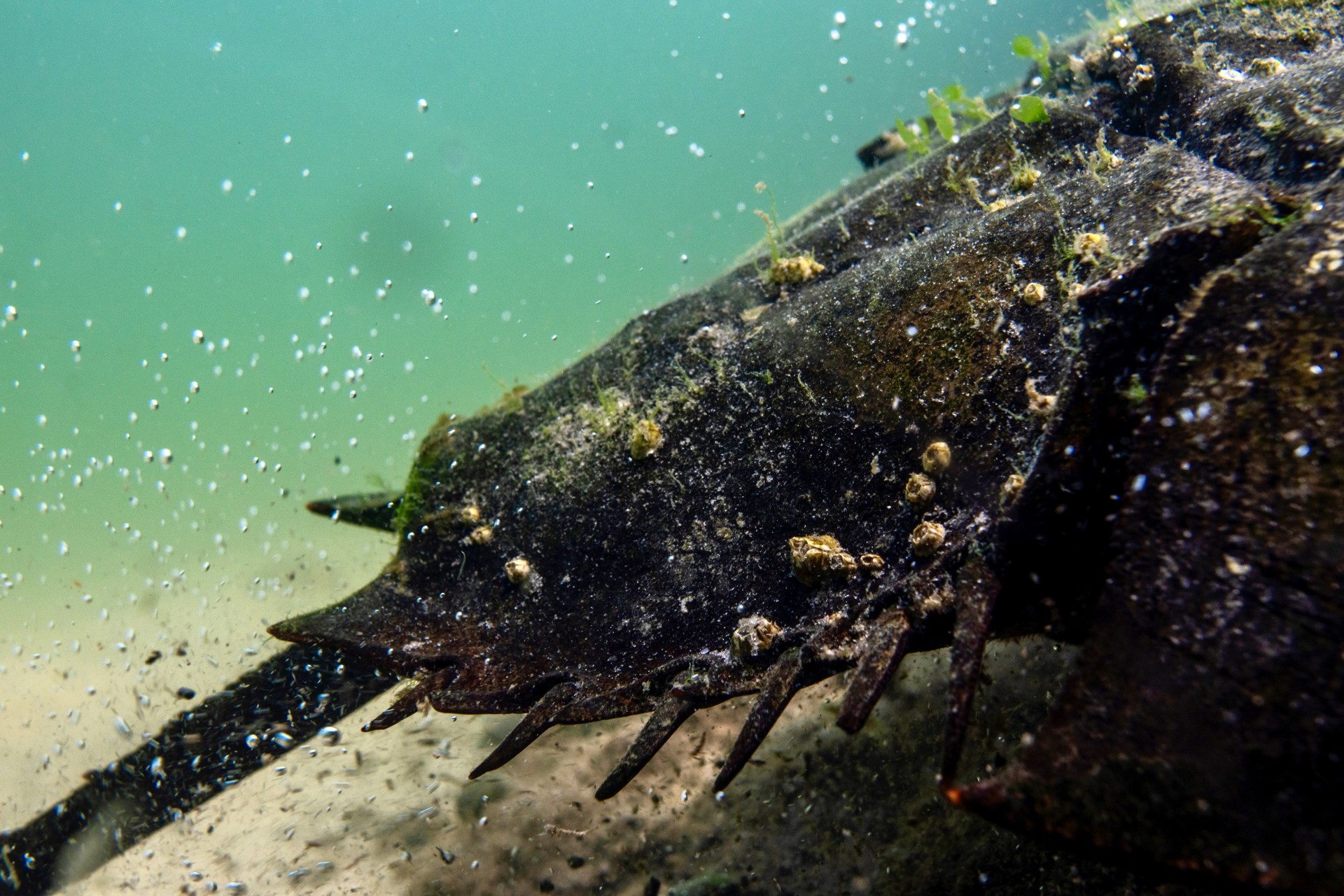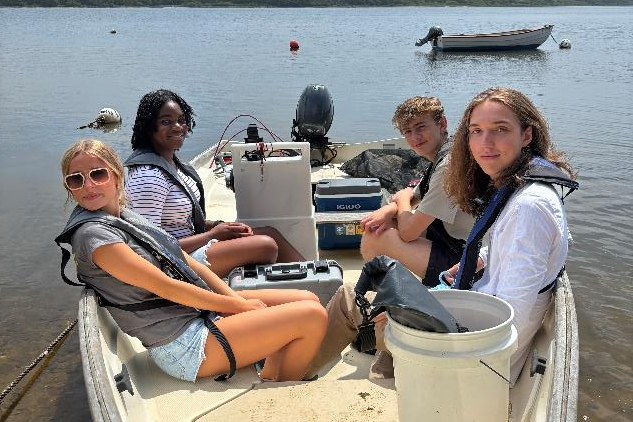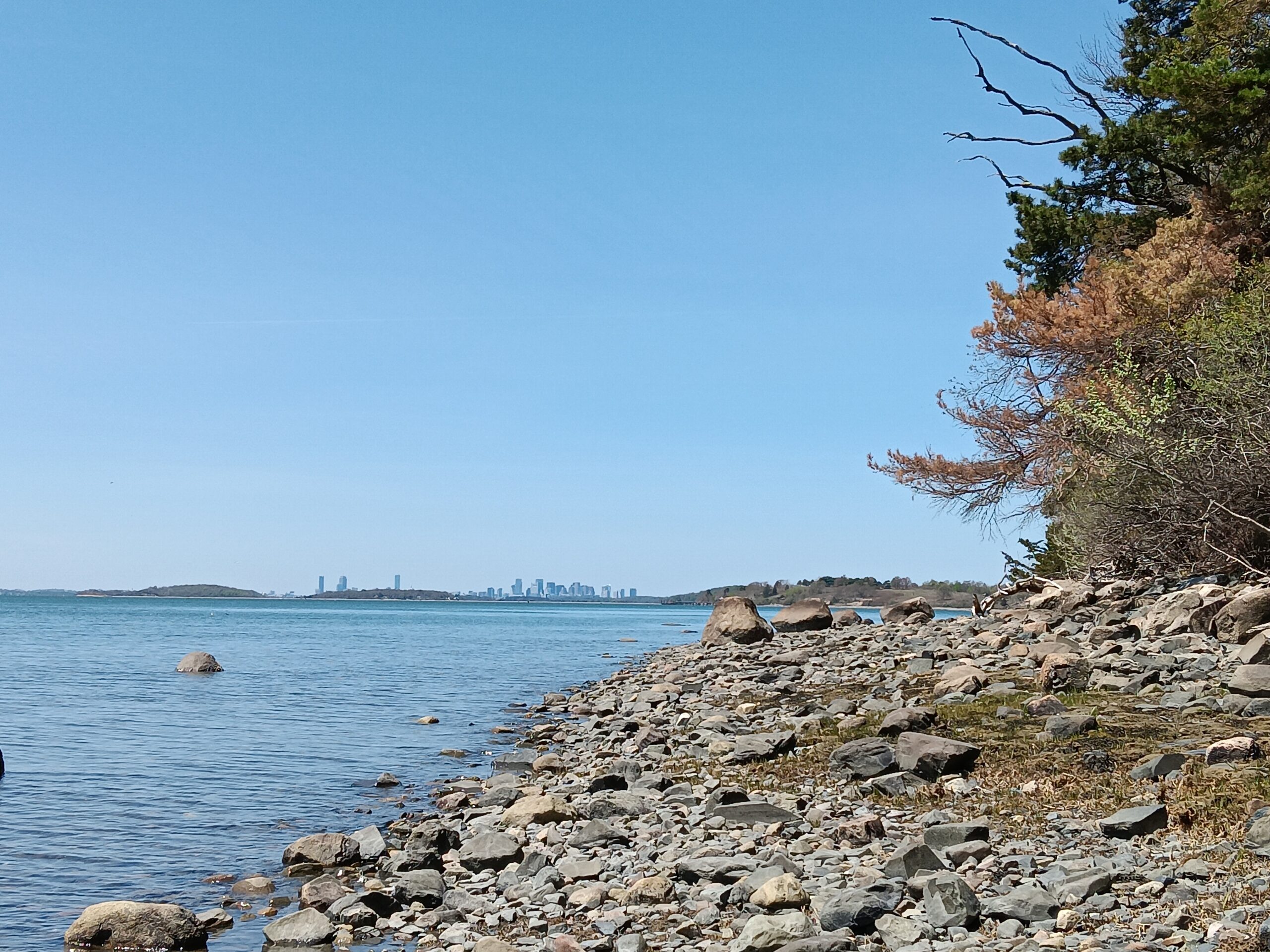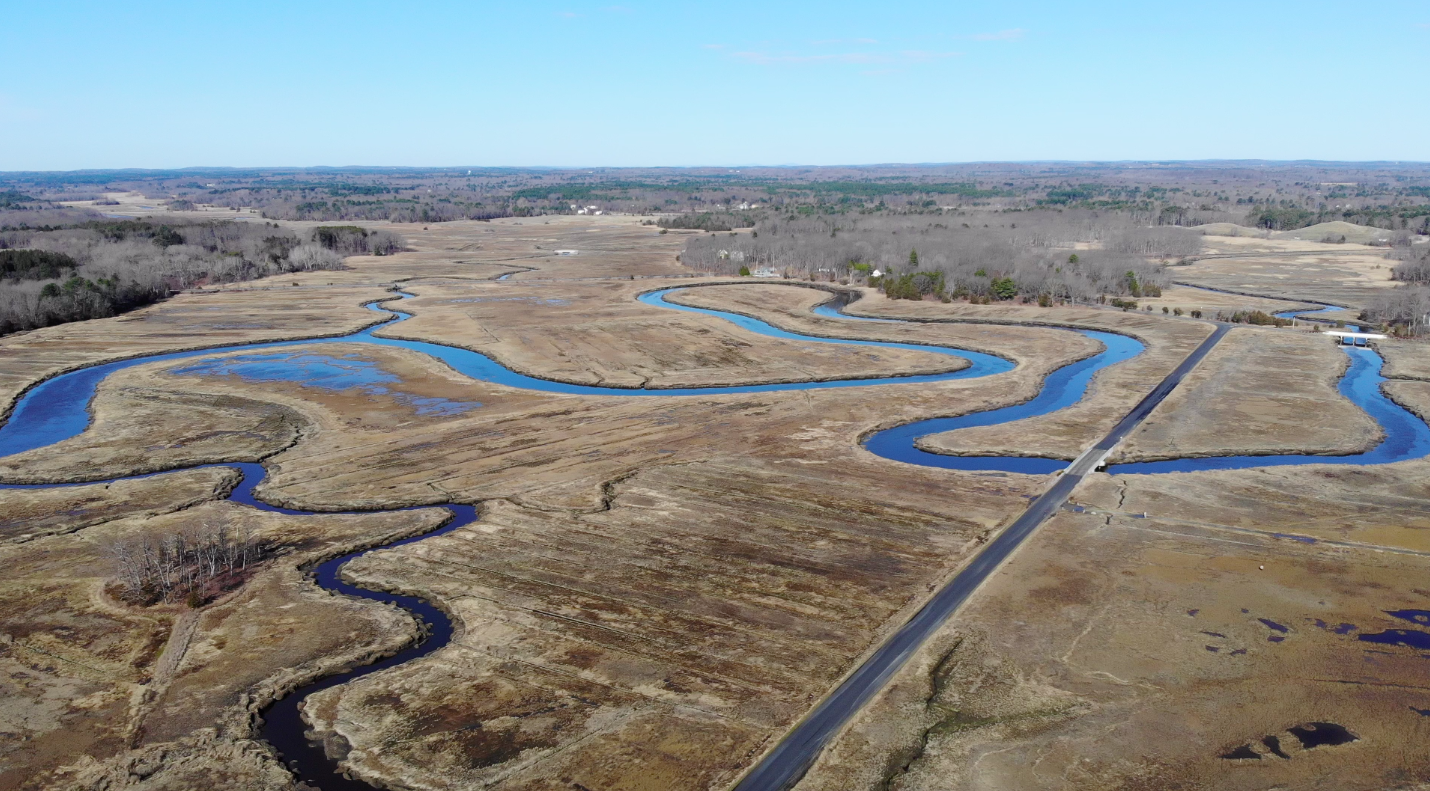
Photo Courtesy Above Summit
In early 2020, The Trustees began restoration work on portions of the 16,000-acre Great Marsh, the largest contiguous stretch of salt marsh in New England. The work began at Old Town Hill in Newbury, with an 85-acre pilot area. Now entering its fourth year, this first phase of the project is providing critical data to inform future restoration in the marsh, bringing resiliency to the landscape scale.
“The marsh needed our help,” said Lead Coastal Ecologist, Russ Hopping. Armed with the understanding that there was a massive historical, agricultural modification that had completely changed the hydrology of the marsh, the Trustees set out to readjust and restore the area via ditch remediation and the unclogging of primary ditches.
Ditch remediation is the process of restoring the agricultural ditches created for marsh hay farming. The process utilizes a natural “healing” technique of harvesting salt hay from the marsh and loosely layering the hay within these historically ditched areas. Over time, this technique has and will continue to allow the hay to collect sediment from the incoming tides and rebuild marsh “peat” naturally to restore the health and natural function of the marsh. Salt marsh peat contains up to 80% undecomposed plant material (e.g., carbon) and only decomposes when oxygen is allowed to seep into the exposed peat via the ditches. Simultaneously, where ditch clogs have been removed from the primary ditches, surface flooding has been reduced. This sets the stage for marsh grasses to regrow, contributing to marsh building.
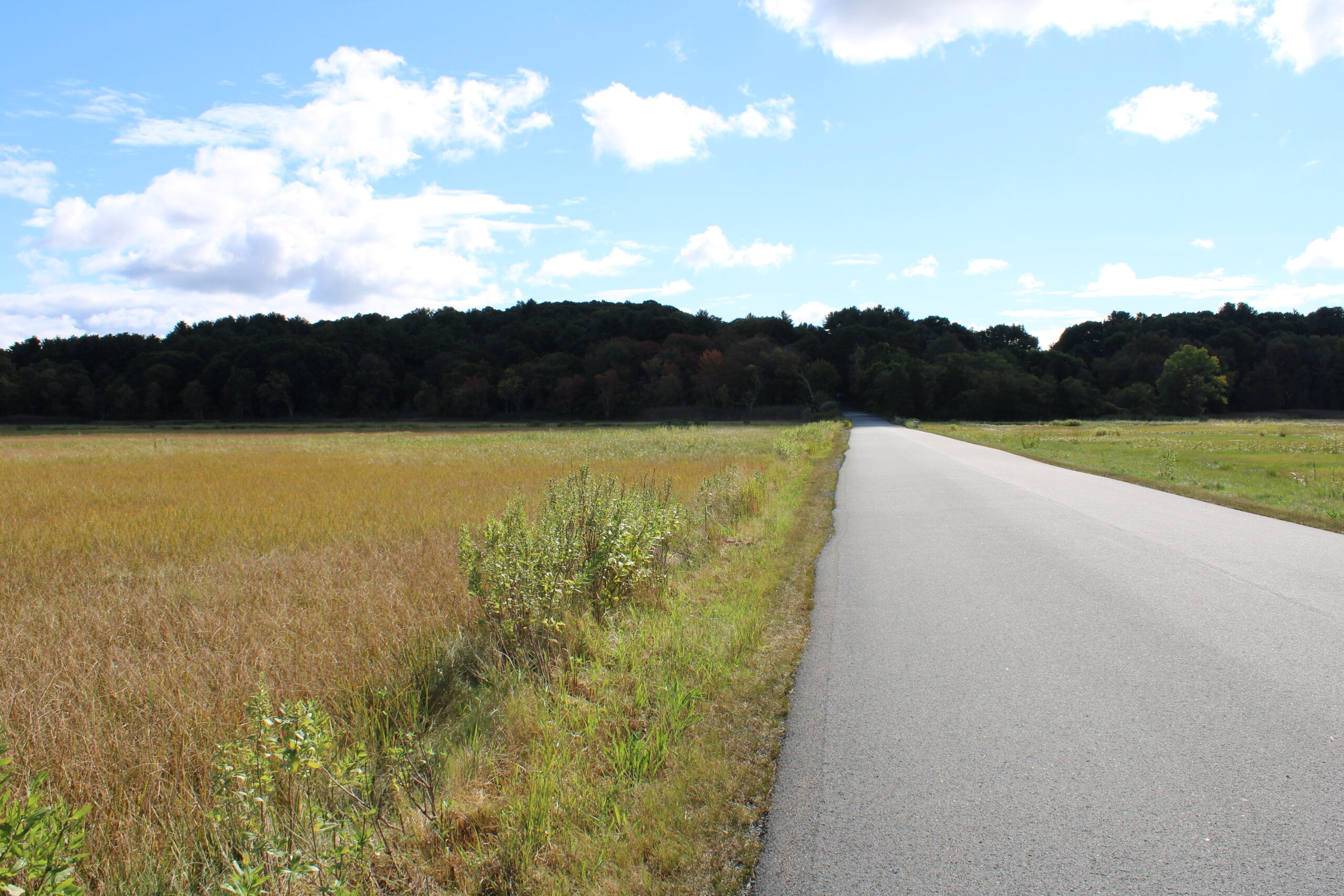
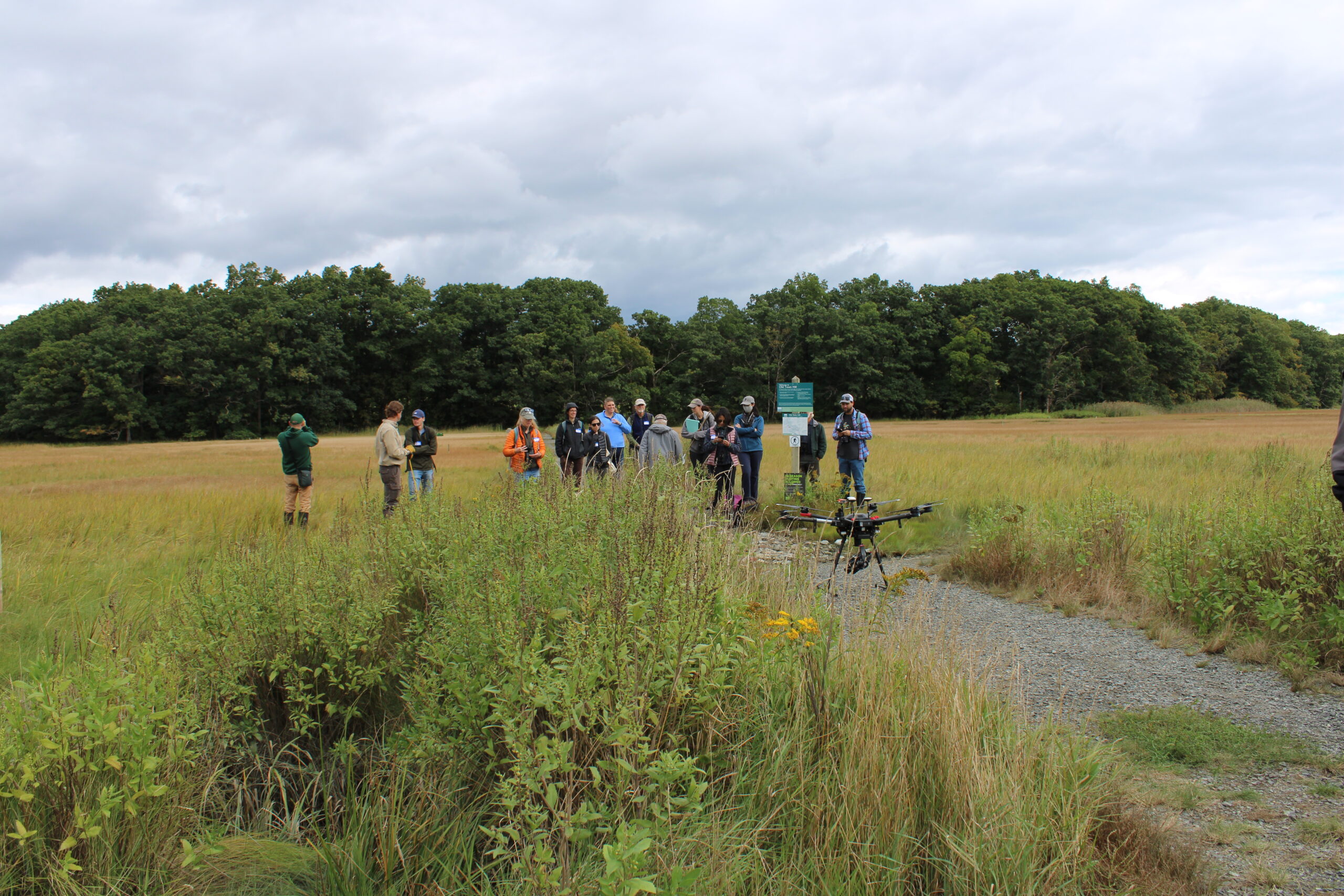
“We have now completed three years of this work,” Russ continued. “The data is showing us that where we have done this ditch remediation groundwater has increased, and that should eventually translate into a stoppage of the oxidation process of the peat and marsh subsidence.”
Phase I serves as the primary site where Russ and our partners educate colleagues and the public on these natural techniques implemented in the Great Marsh restoration effort. As the project has expanded to a second and third phase, the Phase I site serves as a useful engagement site to share data and as a chance for further learning.
The Trustees conducted an extensive coastal vulnerability assessment (CVA) in 2017 – the first of its kind by a statewide conservation nonprofit – in partnership with Woods Hole Group to assess the vulnerability of its coastal sites to climate change impacts. The CVA identified coastal beaches and salt marshes as two of the most “at risk” habitats. This assessment informed the first phase of the Great Marsh project, and the data and results that continue to be collected further inform the future phases.
“In Phase I we have relied on nature doing almost all of the heavy lifting,” Russ explained. “When you start rehabilitating these man-made ditches via ditch remediation, the water that would have flowed through those ditches has to go somewhere else now. It is supposed to go through, and does go through, the remaining ditches left in place, which are surrogate natural creeks. We would expect as a result of that extra flow and sea level rise, that those ditches would extend themselves landward because of the added hydraulic force due to the increase in volume, further improving marsh hydrology.”
“This process needs to occur to restore a network of drainage throughout the marsh,” Russ continued. “We don’t want to see water pooling up on the marsh in new locations as a result of us closing these ditches. And we aren’t seeing that, which is good. But our concern in observing Phase I is that this process does not occur naturally at a rate that is fast enough to address an increase in sea level rise.”
“Generally, I am just thinking about how we can provide nature with the support needed to remain resilient, and not put obstacles in its path as we so often do,” Russ said. “Roads, dams, seawalls – all of these things stop natural functions that are often the secret to a resilient ecosystem.”
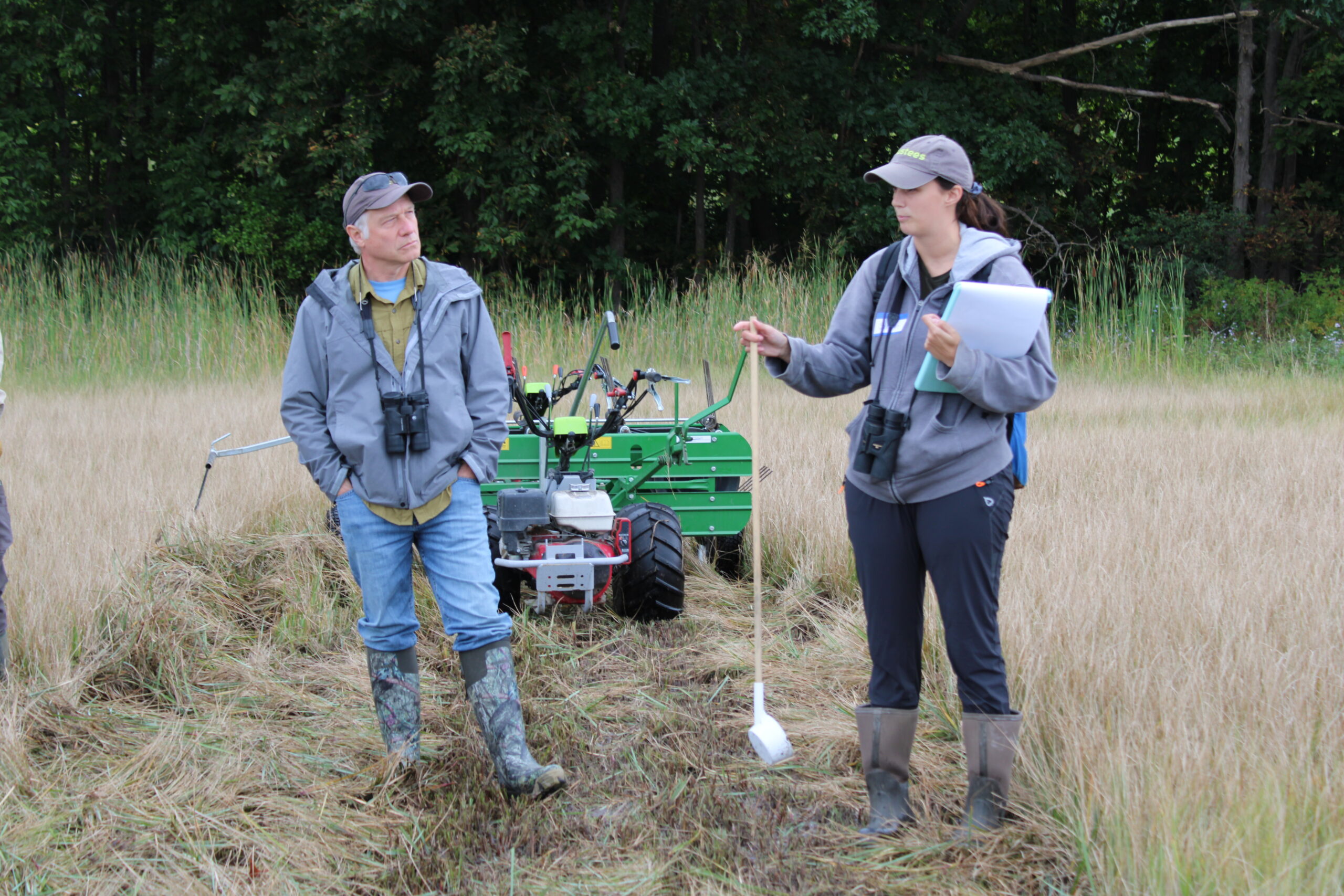
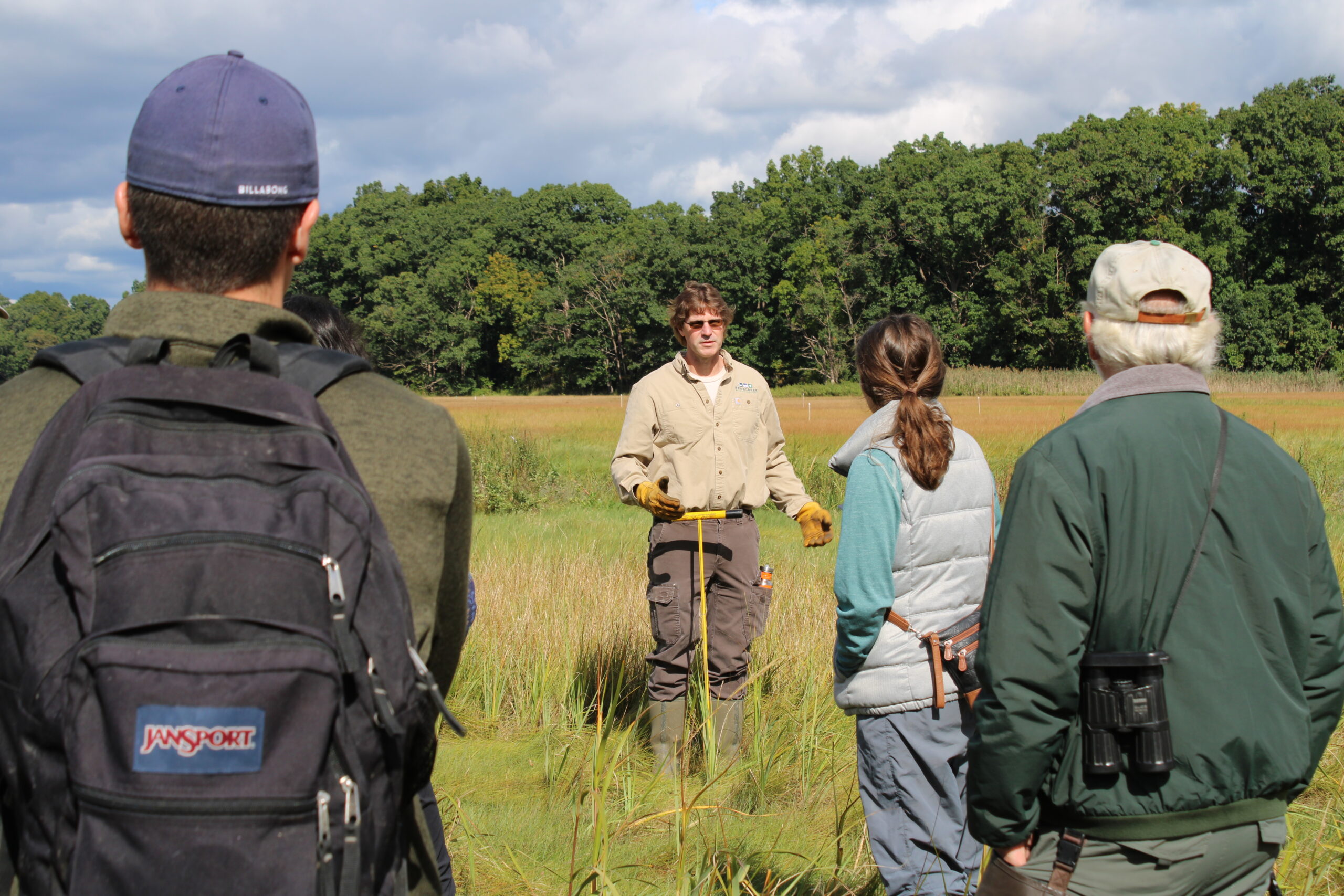
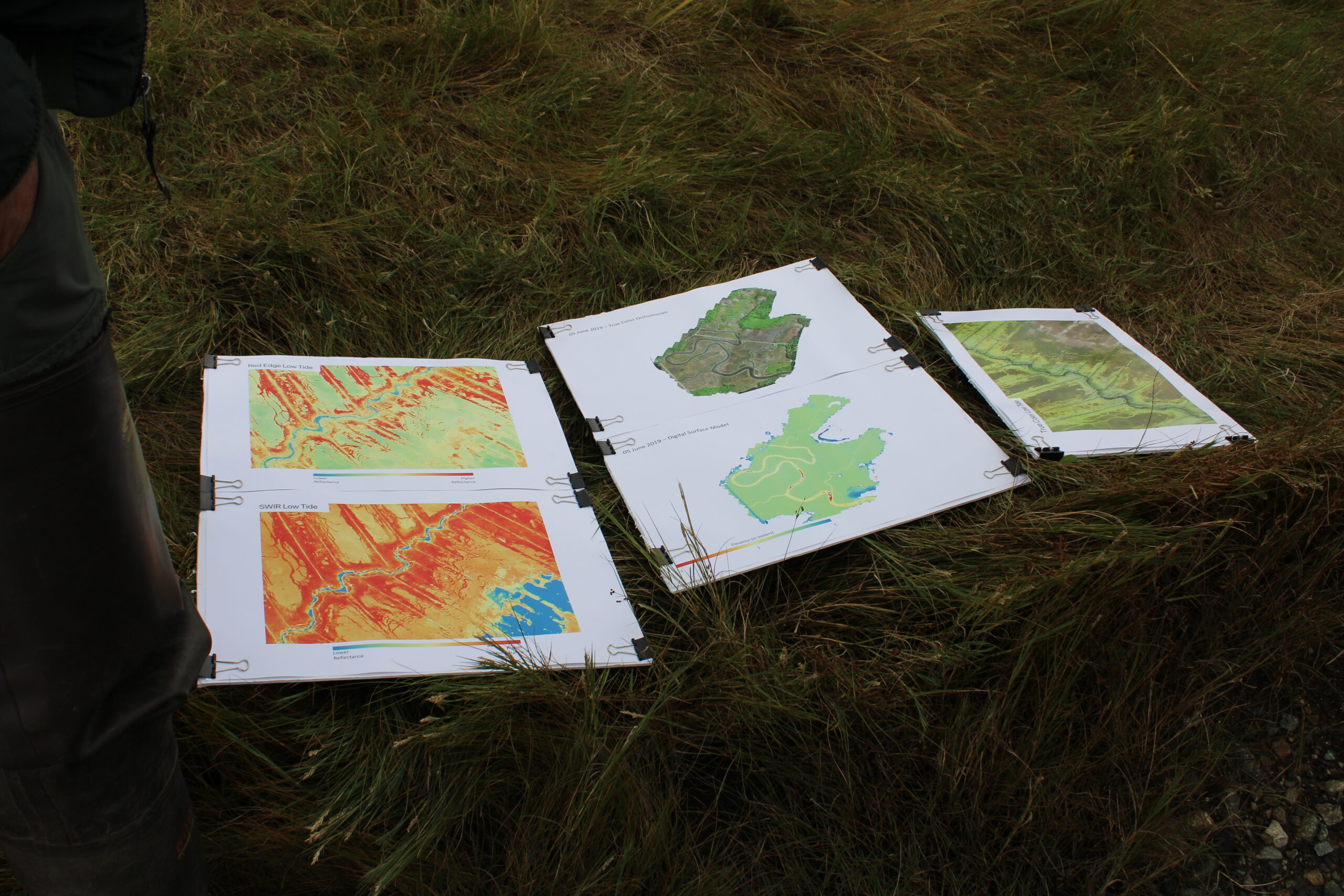
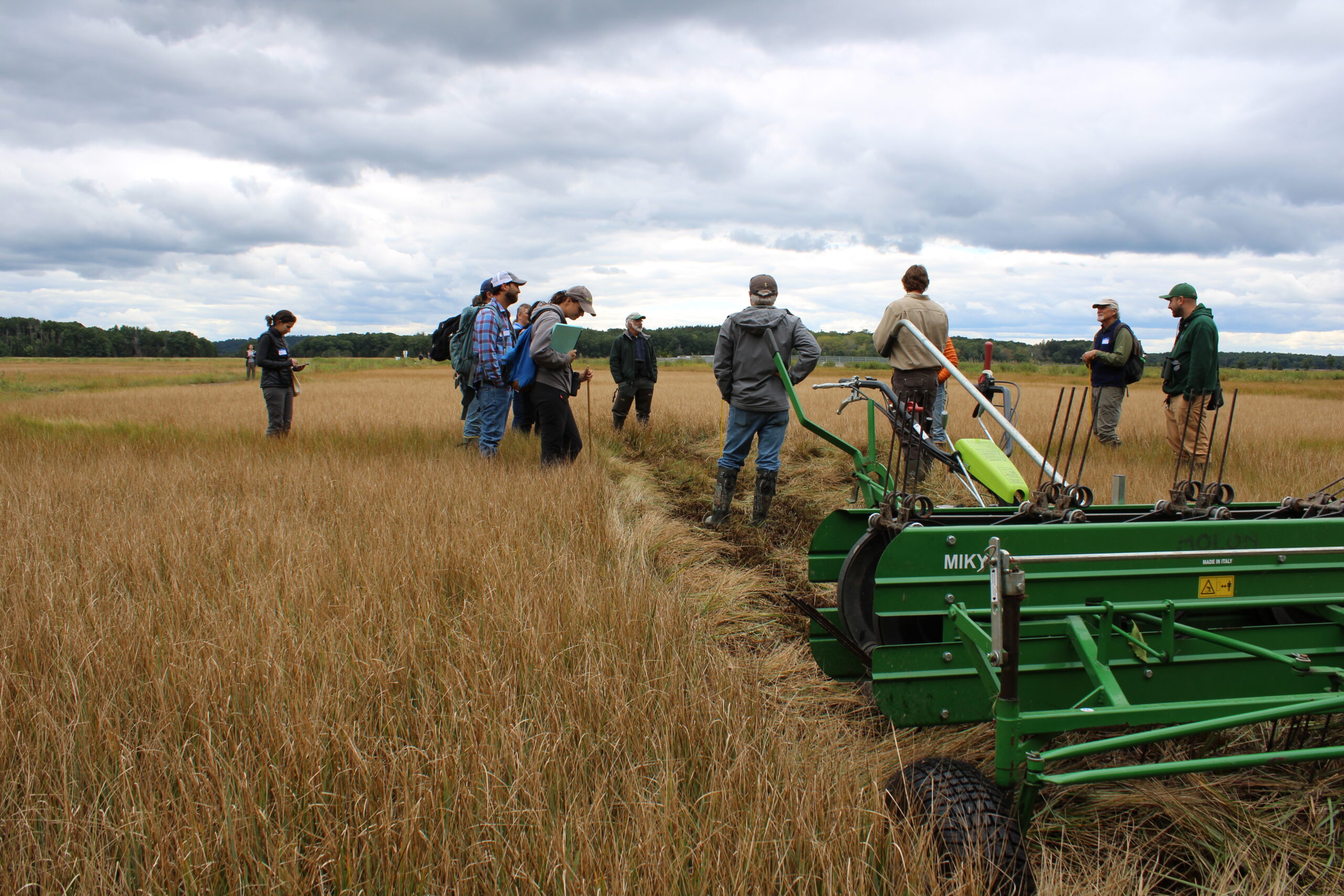
What has been observed in Phase I led to a tweak in the designs for Phase II and III, adding new natural techniques like runneling: creating shallow channels (runnels) that are excavated to restore small creeks that drain off any accumulated surface water from clogged ditches. The water that used to flow through ditches that were remediated instead is diverted to remaining ditches, which keeps them clear of clogs and forces sediment to the marsh surface, where along with healthy plant growth, marsh elevation can increase in the same way it would in a healthy salt marsh. These combined techniques allow the Trustees and partner organizations to ease some of the burden placed on nature and allow the marsh to keep pace with sea level rise.
“You have resistance, which is something like a seawall, you just want to stop nature. It doesn’t matter what’s coming, we build infrastructure that will withstand change. Resiliency is a lot more flexible; the system can absorb some event or change via nature, but overall, still function and bounce back,” explained Russ. “We are not going to stop change from happening, and we are not looking to do that either. We are looking to aid these ecosystems to endure through change. We are restoring resiliency to the marsh.”
Resiliency is a theme that follows the coastal ecology team beyond their work in the Great Marsh. Another ecosystem that the team focuses on are barrens, a habitat type that has built-in resiliency that primarily occurs in the coastal plain. “It’s a system that is dependent on extremes,” Russ said. “These habitats are found in areas with drought-prone soils and are subject to wildfire. But within them, you find fire-adapted species that have been shaped by fire and can endure it. These species are also often at their northernmost limit here in New England, so they will continue to endure despite climate change. While fire and drought are disturbances that are expected to increase, with some management, these systems are ready to continue through that change we expect to see. It’s like a phoenix.”
The Trustees manages eight properties with barrens habitat, and recently conducted prescribed burns at two of those sites with globally rare sandplain habitat.
“Generally, I am just thinking about how we can provide nature with the support needed to remain resilient, and not put obstacles in its path as we so often do,” Russ said. “Roads, dams, seawalls – all of these things stop natural functions that are often the secret to a resilient ecosystem.”
